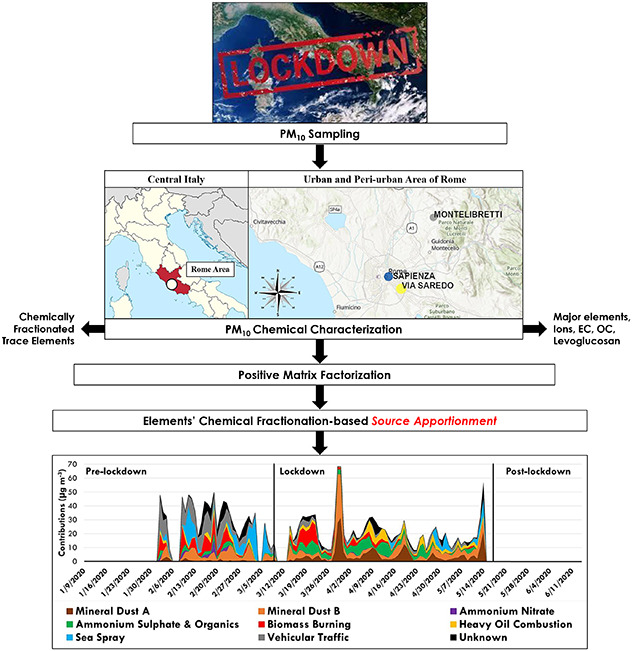A study by the Sapienza University and the CNR-IIA, in collaboration with the University of Molise and ARPA Lazio, analyzes the relationship between the first lockdown of 2020 and the decrease in air pollution from suspended dust. A lower presence of elemental carbon is detected in PM10, following the decrease in vehicular traffic during the lockdown, compared to a poor decrease in the mass of PM10, due to the influx of dust transported from distant areas.
If all the (non-essential) activities of a city stop, as happened in the first lockdown in Italy due to the COVID-19 pandemic, and there is therefore no release into the ambient air of suspended dust and gases from these activities, how much will decrease air pollution from PM10? And, again considering suspended dust, which types of dust that make up PM10 (eg particles from vehicular traffic, from wood combustion, natural dust transported from other geographical areas, etc.) will be reduced the most? These and other related questions have been studied by some researchers of Sapienza University and CNR IIA, in collaboration with the University of Molise and ARPA Lazio.
The results of the study have just been published in the international journal Atmospheric Research (Elsevier) https://www.sciencedirect.com/science/article/pii/S0169809521005263.

